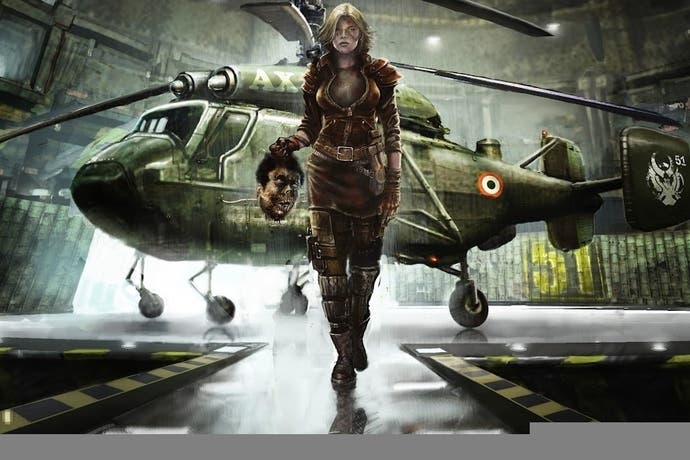Tech Analysis: Dead Nation: Apocalypse Edition on PS4
Killer or filler?
Between the success of last generation's HD re-releases and the need to populate the Instant Game Collection available to PlayStation Plus subscribers, Sony has certainly had a lot of incentive to revisit its back catalogue of late. We've already seen PS4 iterations of Flower, Sound Shapes and Escape Plan hitting at or near launch, but most of these releases have focused primarily on expected image quality and performance improvements. It's not often that such ports receive any significant changes to their core assets, but it seems that the crew at Climax Studios wasn't content with a direct port when it came to Dead Nation.
Dead Nation was already an attractive title on PS3 thanks to the wizards at Housemarque. With a robust lighting engine, huge numbers of zombies on-screen and a rock-solid frame-rate, the game looked and felt great. It was known from the start that Dead Nation: Apocalypse Edition would offer the full collection of all released content for the original game so it was with pleasant surprise that we uncovered some pretty significant changes to the underlying visuals.
From the start, we see an expected increase in resolution from 1280x720 on PlayStation 3 to a full 1920x1080 on its successor. As a game focused entirely on distant overhead gameplay the increased resolution has a genuine payoff through improved visibility of the action. Anti-aliasing is handled by a custom FXAA solution delivering an image sharper than the average post-process implementation. The resulting presentation manages to eliminate nearly all traces of aliasing without sacrificing texture detail. More impressively, typical areas of difficulty, such as chain-link fences and other similarly thin objects, receive excellent coverage producing results more in line with what you'd expect on the PC. Interestingly, anisotropic filtering is absent from the game - not unlike a number of other recent PS4 releases - though in fairness, its absence only becomes visible when pressing up against the wall and it's not a serious detriment to image quality.
Looking beyond the resolution bump, Climax has gone back through the original game with a fine-tooth comb making noticeable changes to the game's assets along the way. While basic world geometry remains the same throughout, the majority of textures have been updated and redrawn at a much higher resolution. Right from the beginning you'll notice richly detailed building facades, sharp gritty surface detail and more lavishly decorated minutiae. In comparison, the PS3 version looks positively blurry, almost as though its textures haven't been fully loaded. Perhaps most importantly, each of these changes manages to improve overall visual quality while staying true to the original art direction.
"Superficially, this may seem like a higher-resolution port of the PS3 original, but a closer look reveals plenty of visual enhancements on PlayStation 4."
Light and shadow are another crucial element in any horror-themed experience and we're happy to see enhancements on this front as well. Shadows are now rendered at a much higher resolution with the resulting penumbra mostly free of dithering artefacts. Looking closer, there is some evidence that suggests that Climax has implemented contact-hardened shadows, designed to smoothly diffuse shadow edges as they are projected across a surface. The end result is clean, artefact-free shadows that mesh well with the rest of the environment. Thanks to the camera placement players are regularly treated to a display of nicely projected shadows dancing across the screen.
Volumetric lighting and effects have also received a noticeable increase in precision. These effects are used throughout the game to both represent player heading via a flashlight cone and enhance atmosphere. Flashlight cones, headlights and fog all appear much more voluminous and defined on PS4 as a result. Dynamic light sources also produce shadow volumes when passing in front of solid objects, further accentuated when surrounded with thick fog. In addition, the saw-tooth effect observed around moving characters on PS3 has been completely eliminated here.
Alpha effects were also rendered at a lower precision in the original PS3 release resulting in somewhat chunkier explosions and smoke clouds. The PS4 iteration sees the resolution of these effects increased significantly alongside additional changes to the core artwork. Plumes of smoke, large explosions and clouds of dust have all been updated with more complex and detailed effects. There's no shortage of pyrotechnics in Dead Nation and the changes have a distinct impact on the intensity of these effects.
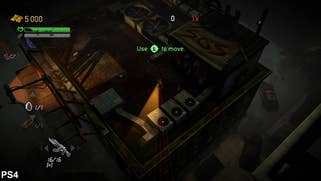
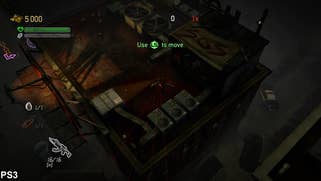



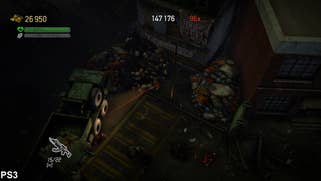
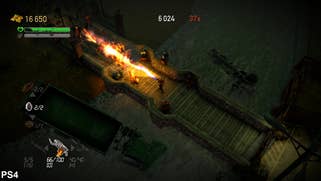
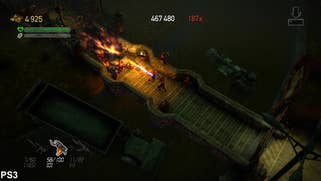
Other changes focus on creating a more consistent image through elimination of rendering artefacts. The environment of Dead Nation is suitably dark and gritty, almost to the point of fatigue at times, but the changes made to image composition definitely help breath more life into the game. Objects now feel more grounded thanks to SSAO, while surprisingly subtle reflections allow for more realistic wet surfaces. The physics-based clutter that filled the streets of the original version now spills out onto the street in much greater volume as well. Rain and other environmental effects are also increased in density and quality.
If there's one aspect of the visuals that we found ourselves disappointed in it's the frame-rate. Dead Nation already operated at a stable 30fps on PlayStation 3 and, unfortunately, no changes were made for the PlayStation 4 iteration. While it's true that the relatively slow camera movement prevents this from becoming an issue for playability, there's no doubt that the game would have felt even better at twice the frame-rate. On PlayStation 3 it was safe to assume that the heavy reliance on dynamic lighting made it nigh impossible to hit 60fps, but it would have certainly been nice to see a higher frame-rate here and we do wonder why this was not possible bearing in mind the PS4's lavish GPU resources.
Thankfully, despite this limitation, the performance never falters. No matter how many zombies and effects fill the screen the game maintains its 30fps update at all times, which is key. Even in co-operative multiplayer, the frame-rate holds steady without so much as a hiccup throughout our run of play. What isn't clear is if this limitation is the result of a legacy problem or if they simply didn't have the time to optimise for a higher frame-rate. Housemarque itself seems committed to 60fps generally, so we can only hope that its next PS4 project manages to hit that mark.
"Performance is absolutely rock-solid - but the PS4 version of Dead Nation only matches the 30fps update of the original game rather than hitting the magic 60fps."
Unfortunately, despite solid technical underpinnings, the release has proven to be somewhat unstable for a lot of users. While we did not run into any issues during the single-player campaign, any features requiring network access were prone to difficulties. The game sometimes seizes up while trying to update the leaderboards, for instance, while other users are left with a corrupt save file following a crash.
Furthermore, playing online proved unstable especially when trying to join up with a friend. Even after a successful round it was not uncommon for one of us to be dropped from the game with a stranger showing up in their place. Lastly, our experience with the broadcast+ option, which offers viewers a chance to influence the difficulty of the game for the player, was lacking audio. With its availability as March's free PlayStation Plus game of the month it's fair to assume that the servers received more traffic than was anticipated. Thankfully, Housemarque's twitter feed confirms that they are at least aware of the problem and investigating a solution.
Dead Nation: Apocalypse Edition: the Digital Foundry verdict
Dead Nation: Apocalypse Edition represents a solid twin-stick shooter incorporating the original game with the full catalogue of PS3 DLC options available from the start. While the lack of 60fps is certainly lamentable, the rest of the work done on this port offers some pretty significant advantages over the original release. Increased texture detail, refined lighting and shadows and higher-resolution effects across the board all help to produce a sharper yet grimier world. It's clear that a lot of work was put into this release in order to bring it up to PS4 standards. However, despite being offered as a PlayStation Plus freebie this month, the lack of Cross Buy support for owners of the original release is a bit of a disappointment.
It's a shame then that the initial release has been fraught with so many connectivity-related issues and the potential for save corruption. At least these problems have been acknowledged by the development team, so we can hope for a potential fix in the coming weeks. For now, it's certainly worth the download - especially for those that haven't yet played it. The fact that it's completely free for PlayStation Plus subscribers is just the icing on the cake.
